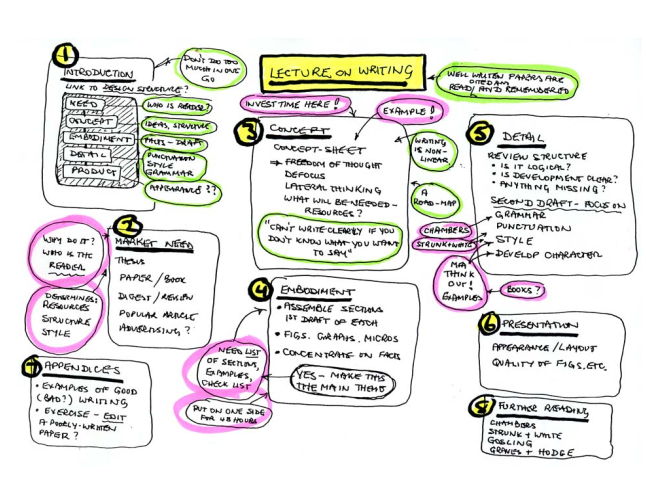How to read and write a paper according to hackernews
- How to Read a Paper [pdf] | Hacker News (pdf)
-
I give all my doctoral students a copy of the following great paper (and I’ve used a variant of the check list at the end for years - avoids errors when working on multiple papers with multiple international teams in parallel) http://www-mech.eng.cam.ac.uk/mmd/ashby-paper-V6.pdf
-
I’ll write here the main points from each of the linked PDF, copyright belongs to the original authors ofc.
How to Write a Paper
How to Write a Paper
Mike Ashby
Engineering Department, University of Cambridge, Cambridge
6 rd Edition, April 2005
This brief manual gives guidance in writing a paper about your research. Most of the advice applies equally to your thesis or to writing a research proposal.
This is based on 2016 version of the paper, more are here: https://news.ycombinator.com/item?id=38446418#38449638 with the link to the 2016 version being https://web.archive.org/web/20220615001635/http://blizzard.cs.uwaterloo.ca/keshav/home/Papers/data/07/paper-reading.pdf
- The design
- The market need - what is the purpose? Who will read it? How will it be used?
- Thesis / paper / research-proposal:
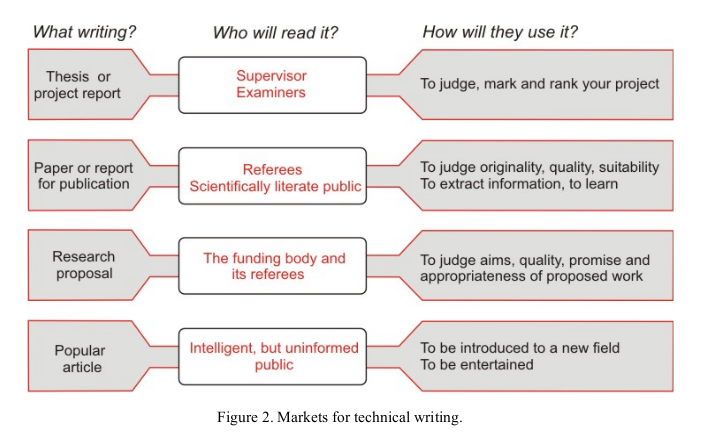
- Thesis / paper / research-proposal:
- The market need - what is the purpose? Who will read it? How will it be used?
- Concept
-
When you can’t write, it is because you don’t know what you want to say. The first job is to structure your thinking.
- A3 paper where you draw things:
-
-
Don’t yet think of style, neatness or anything else. Just add, at the appropriate place on the sheet, your thoughts.
-
- Embodiement
- the first draft
- the PDF lists random bits about each sections, like abstract / introduction / …
- Introduction:
- What is the problem and why is it interesting?
- Who are the main contributors?
- What did they do?
- What novel thing will you reveal?
- Method
- ‘just say what you did, succinctly’
- Results
- Same; also succinctly, without interpretation etc.
- …
- Appendices:
- essential material that would interrupt the flow of the main text
- Grammar!
-
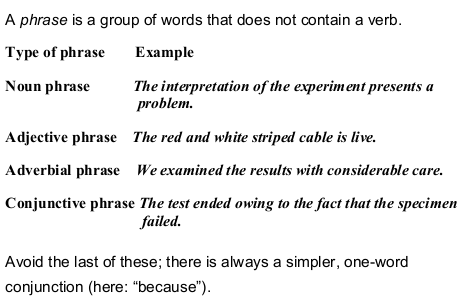
- That VS which!
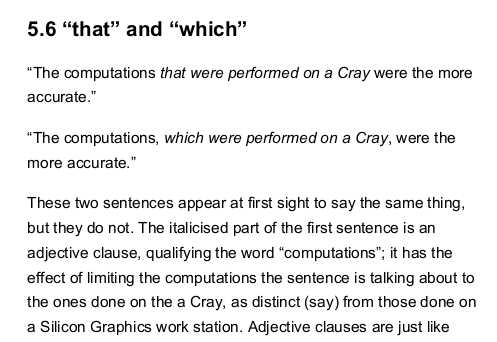
-
- Punctuation:
- really interested and itemized
- Dashes: “The dash sets off parenthetic material that results in a break in continuity in a sentence. [..] A dash can lead to an upshot, a final summary word or statement, and give emphasis:”
- Parentheses—literally: putting-asides—embrace material of all sorts, and help structure scientific writing. But do not let them take over, clouding the meaning of the sentence with too many asides.
- Italics: the best of the three ways (with bold and underline) to emphasize stuff in scientific writing.
- Brackets are used to indicate editorial comments or words inserted as explanation:
[continued on p. 62],[see footnote].
- Style
- Be clear. Use simple language,familiar words, etc.
- Design: Remember who you are writing for. Tell them what they want to know, not what they know already or do not want to know.
- Define everything
- Avoid cliches; avoid empty words
-
Avoid clichés (standard formalised phrases): they are corpses devoid of the vitality which makes meaning spring from the page
-
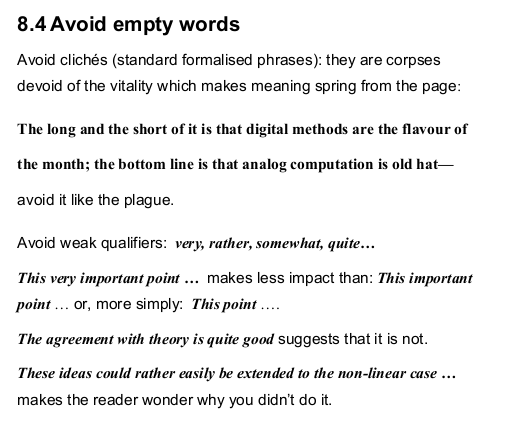
-
- Do not overstate, over emphasise or apologise:
не верь, не бойся не проси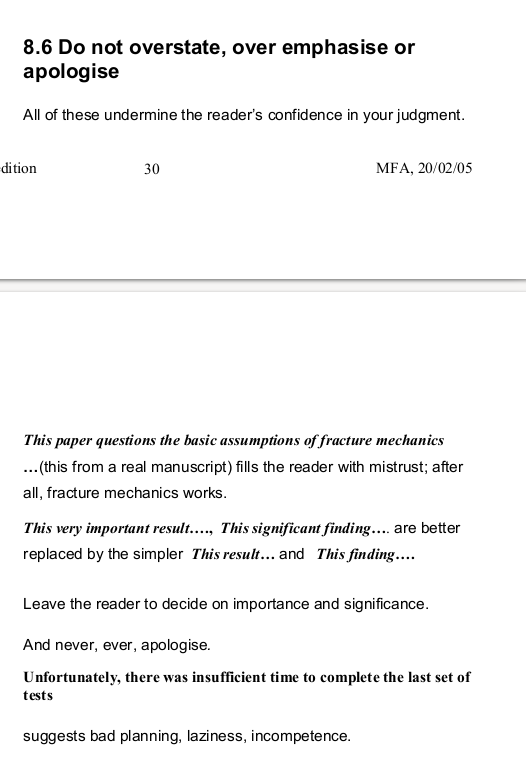
- Avoid being patronising, condescending or eccentric
- Good first sentence:
- Openings such as: It is widely accepted that X (your topic) is important … has the reader yawning before you’ve started.
- At the end it has examles of effective and ineffective writing
- At the very end it has this:
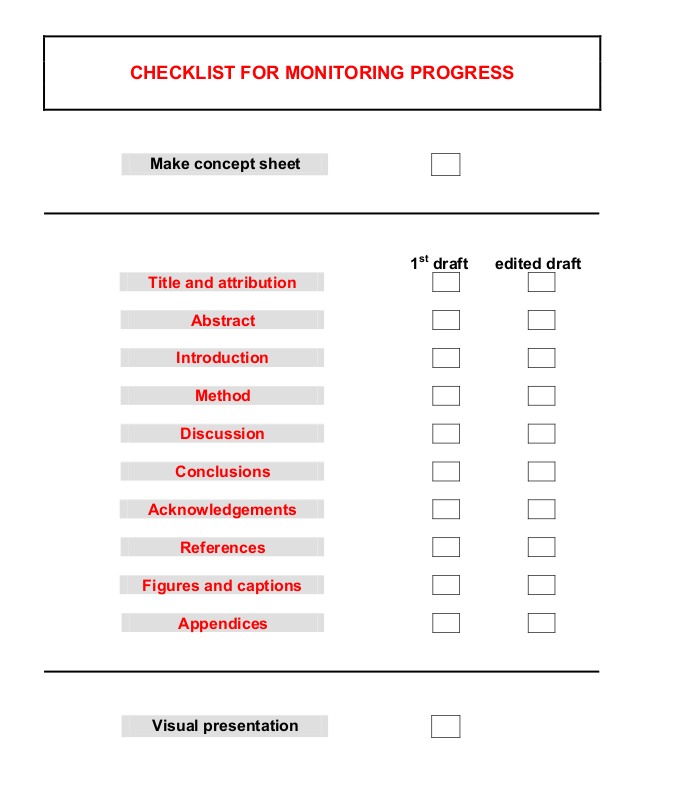
How to read a paper
How to Read a Paper
S. Keshav
David R. Cheriton School of Computer Science, University of Waterloo
Waterloo, ON, Canada
keshav@uwaterloo.ca
http://ccr.sigcomm.org/online/files/p83-keshavA.pdf
- Three passes of varying levels of thoroughness
- Literature survery:
- also three steps:
- find recent papers in the area through google scholar etc.
- find top conferences
- look through their recent conference proceedings
- also three steps:

